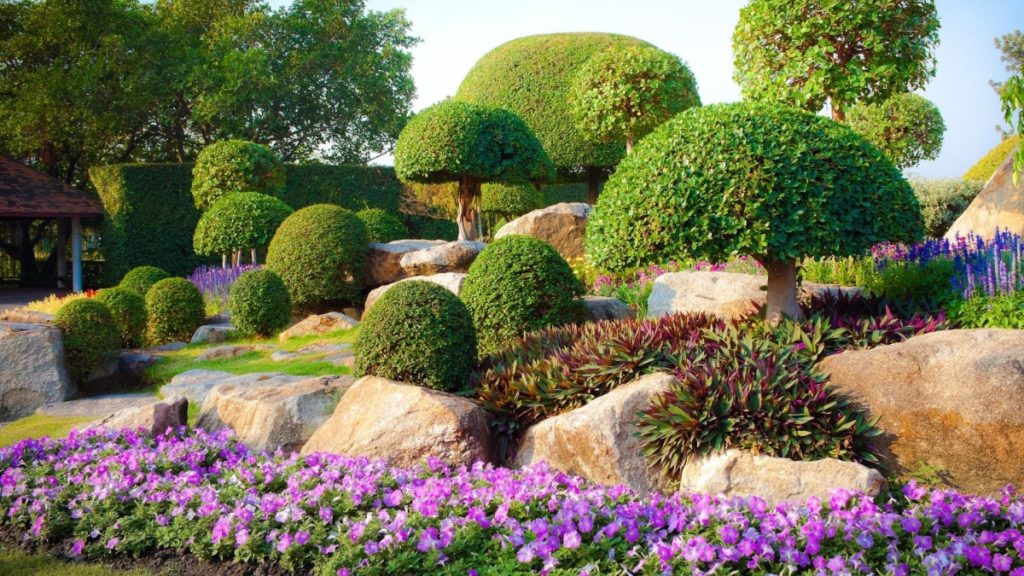
Shrubs of the southeast cover the region from Florida to eastern Texas and north to Virginia and Tennessee. Gardeners must deal with extreme heat and humidity for much of the year. You are fortunate, however, to have a large and diverse group of native plants and trees to choose from.
There is something to be said about a nice shady wildlife garden. Not only is it a place to enjoy and relax, but it becomes a haven for mammals, birds, butterflies and other wildlife.
Shrubs of the southeast will help compliment your trees and flowers. I encourage you, when building your wildlife gardens or any gardens, to put some of your personality into it. Keep a special flower, tree or shrub (I do). Add some yard art or wind chimes and a bench. You enjoy your gardens more when there is part of you built in to it.
Wildlife gardens are an extension of Nature’s handy-work. You wont see neat and tidy in the wild. Besides, you may learn to relax more when your gardens are relaxed.
- Observe and learn about the wildlife in your area.
- Can you attract a certain bird or butterfly?
- If so what must you plant?
- Does it need open spaces or is it shy?
Remember, you will always have something living in your gardens. Shrubs of the southeast may also contain small trees and many of them extend into the Northeast and the Prairies. The bushes I mention here are just a few of the native plants that grow wild but they are proven to be a hit with gardeners and wildlife.
Inkberry (Ilex glabra)
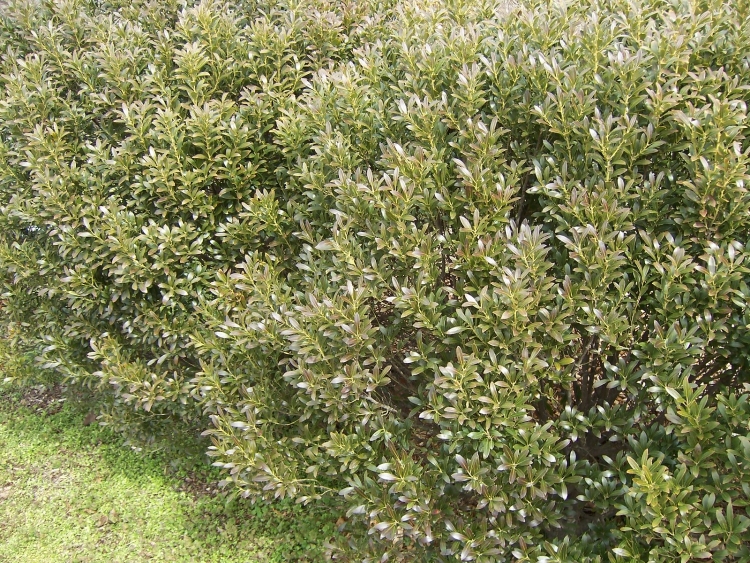
A spineless, evergreen holly that is effective as for hedges screening, or in a combination setting.
- These shrubs of the southeast grow to 8 – 10 tall and round. They are hardy from Zones 4 – 9. Tolerates sun and shade, wet to dry conditions, but does best in moist fertile soil.
- Like all holly, male and female flowers are on different plants and are a must for berry production. Be sure to plant one male for every three females.
- Inkberry attract robins, bluebirds, Northern cardinal, catbirds Cedar waxwings and a host of other berry eating birds.
Hoary Azalea (Rhododendron canescans)
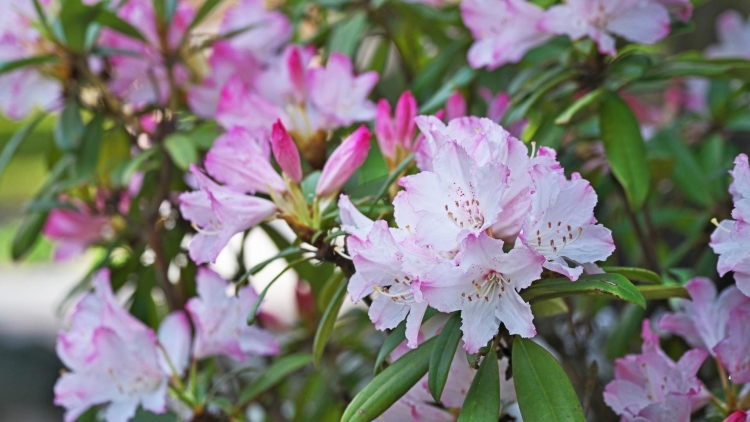
There are many native species of Rhodos to the area that provide nectar for butterflies like Fritillaries and Swallowtails. This one in particular is one of many species of rhododendron.
- A native plant of stream and the sunny edge of woodland areas.
- Easy to grow, Hoary azalea prefers moist, well drained soil, but tolerates less than ideal conditions.
- They offer up sweet fluids for the Ruby throated hummingbird.
- It grows from 10 to 15 feet and can grow in zones 5 – 9
- A deciduous shrub for full sun to part shade.
- The Hoary azalea is also a host plant for Gray comma and the Striped hairstreak butterflies.
Spicebush (Lindera benzion)
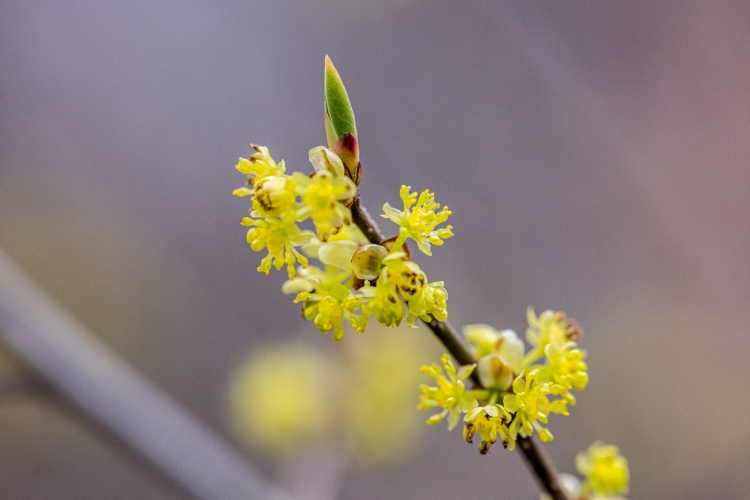
A must for any garden.
- Male and female flowers appear on separate plants before the foliage appears.
- The sweet fragrance is pleasing to us, but also bees.
- Spicebush grow wild along flood plains and woodland streams, but do well in the wildlife garden.
- They grow to 10 feet and favor filtered sun to partial shade.
- Grow well in zones 4 – 8 and need a moderate to high amount of moisture and acid soil.
- To insure berries, include at least one male for every 3 to 4 female bushes.
- Several berry eating birds will pick away before the migration and a nice food supply over the winter months.
- Spicebush is one of two host plants for the Spicebush swallowtail butterfly the other is the sassafras tree.
Mountain pepperbush (Clethra acuminata)
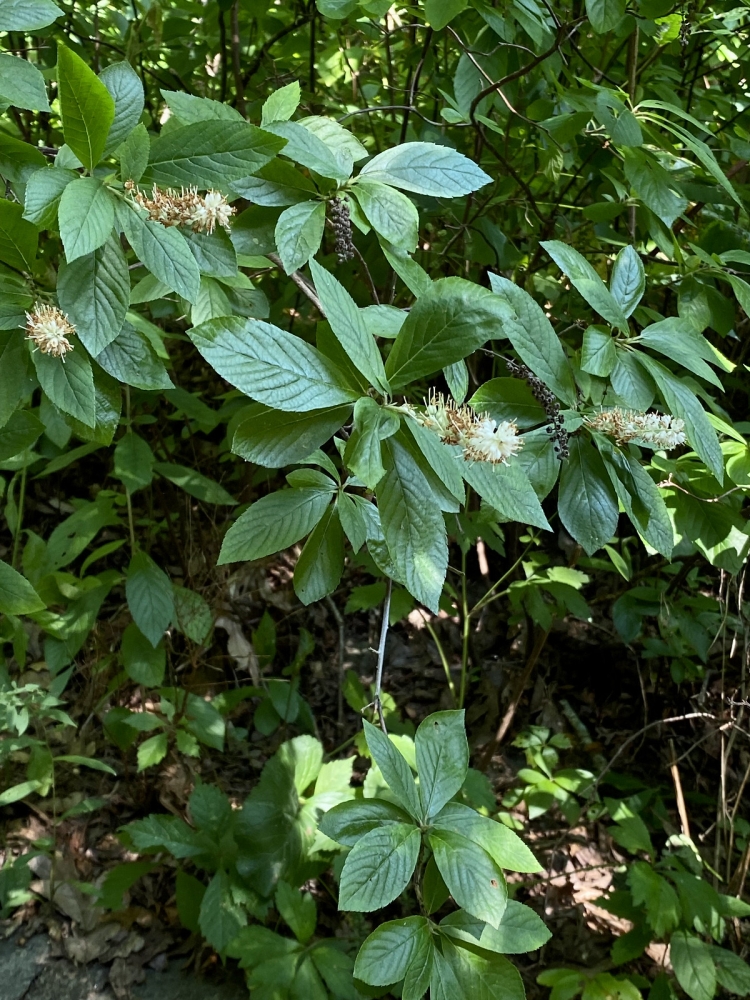
Restricted to zones 6 and 7, but a favorite for bees, butterflies and hummingbirds.
- The sweet smelling blooms of pepperbush is a favorite for human noses as well.
- A medium height bush that prefers sun to partial shade and does well in moist but well drained soil.
- Birds of the southeast will take care of the seeds later on in the year.
Christmasberry (Lycium carolinianum)

Before the popularity of poinsettias, ladies would ask for Christmasberry.
- A wonderful and attractive evergreen bush that thrives along sandy dunes and coastal areas of salty water.
- Very drought tolerant too.
- These plants are ideal along break walls but do well in sunny gardens in your zones 7 to 11 gardens.
American beautyberry (Callicarpa americana)
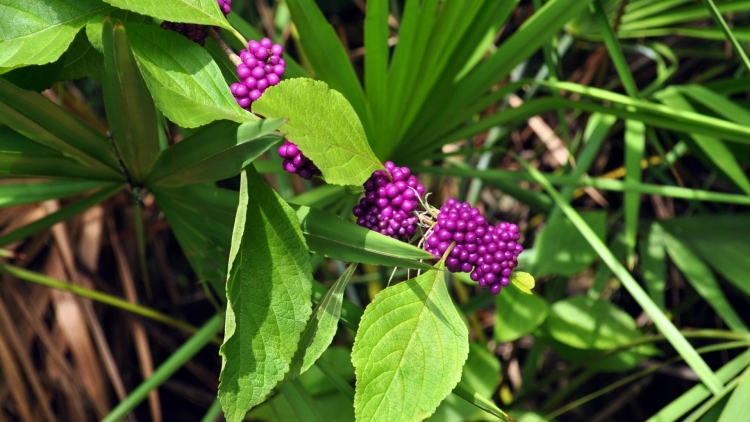
A native shrub that grows to 6 feet (fruit shown above right).
- A hardy shrub from zones 6 to 10, grows native throughout much of the region
- Pleasing to our eyes as well as a source of food for more than 20 birds.
- Beautyberry grows in full sun to partial shade and in neutral and acid soils.
- When you are picking out a variety at your nursery, be sure to pick native, there are several Asian species on the market.
Black huckleberry (Gaylussacia baccata)
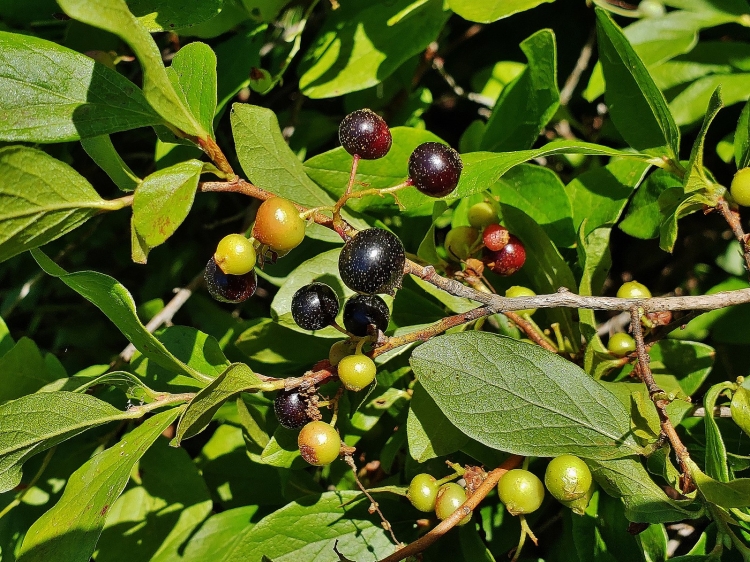
Huckleberries grow from zones 3 to 9, they are found in sunny to shade forests and woods edge.
- A very popular food source for fruit eating birds like catbirds, bluebirds and many others.
- Be sure to offer this treat to your wildlife friends.
Wax myrtle (Myrica cerifera)
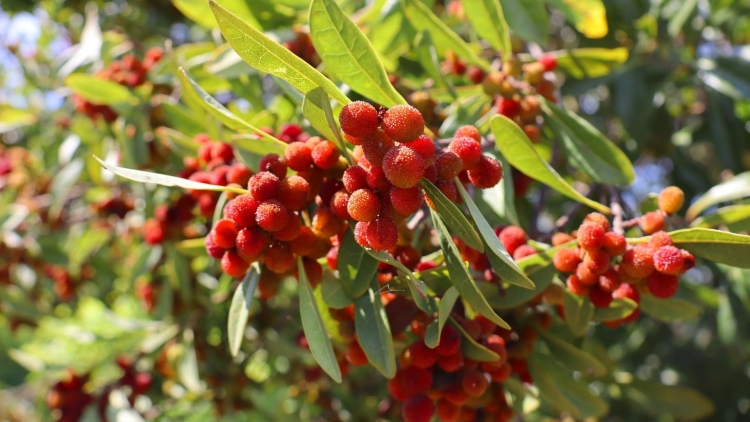
A large bush or small tree that is evergreen in warmer climates and semi-evergreen where the temperatures get a bit nippy.
- Hardy in zones 7 to 11 this beauty grows near coastal areas from New Jersey to Florida and around the Gulf coast states.
- It makes a good planting in coastal break water and in gardens.
- Wax myrtle tolerates floods and drought.
- Mockingbirds, cardinals and migrating warblers welcome Wax myrtle and the wildlife gardener will as well.
- They are easy to dig up in the wild, but ask the land owner first.
Blackhaw Viburnum (Viburnum prunifolium)
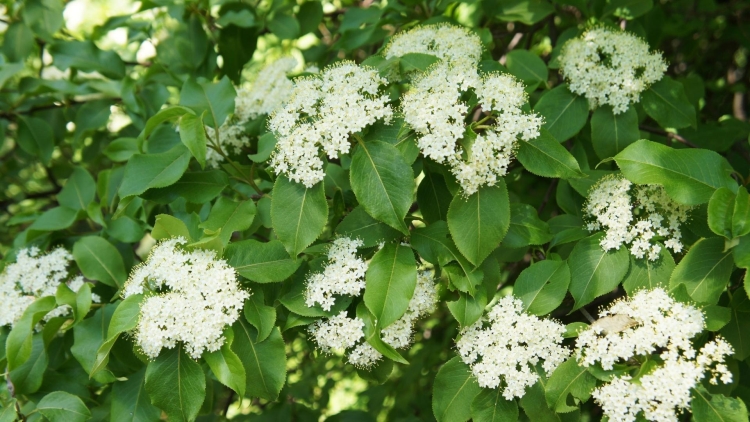
A native shrub that grows to 15 feet and grows in full sun to shade in zones 3 to 9.
- Blackhaw prefers moist but well drained soil and makes a great understory plant. They also tolerate sunny poor soil conditions.
- These are a fruit eating bird’s delight and can grow in open areas as well as open wooded areas.
- Viburnum attract butterflies as pollinators and as a host plant for some.
- They also are dense growers offering protection and nest sight for birds.
- Do you have open areas and want bluebirds? Plant Vibunums and other berry producers like dogwoods and blueberries.
As with all regions, there are to many shrubs of the southeast for me to mention here. Your local garden centers and nurseries should have a grip on what is native for your wildlife gardens. Compliment your shrubs of the Southeast with some native trees to complete your wildlife gardens.
